1902: Samuel M. Tenney
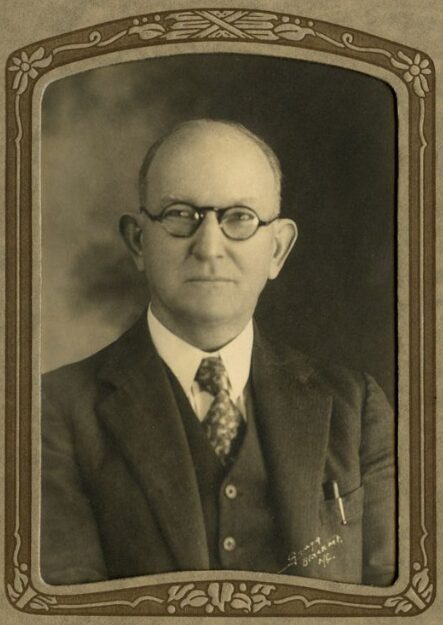
In 1902, 31-year-old Presbyterian pastor Samuel M. Tenney found a bundle of manuscripts in a second-hand bookstore in Houston, Texas. The store's proprietor, who evidentially had planned to dispose of the loose papers, gave Tenney the manuscripts at no cost.
The salvaged manuscripts--primarily made up of a student notes from a Senior Theology seminary class at Hampden-Sydney in Virginia--were not particularly historically valuable by themselves, but their discovery inspired Tenney to organize the Presbyterian Historical Society of the Synod of Texas. The original collection found by Tenney is currently archived at Columbia Theological Seminary in Decatur, Georgia.
1924: Texas
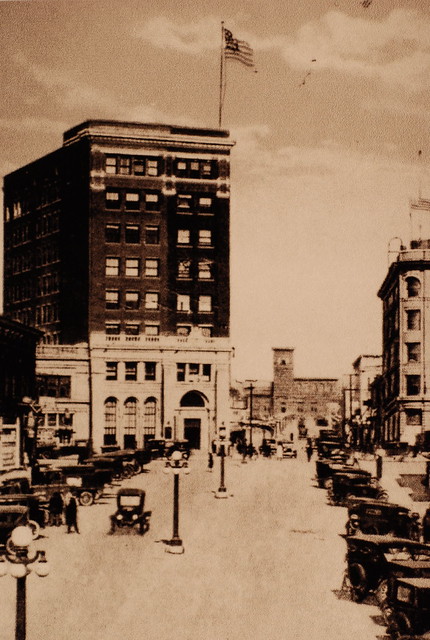
After contracting influenza during WWI, Tenney's hearing, which he had been gradually losing since childhood, deteriorated. He was unable to continue serving as a minister.
Then, in 1924, on his way to a class reunion at Princeton Theological Seminary, Tenney visited the Presbyterian Historical Society (PHS) in Philadelphia (founded 1852), which was then located in the Witherspoon Building (at right). There he met the PHS librarian, Dr. Louis Benson, who was also deaf. In 1924, Tenney moved his growing collection to a rented room inside the modern (and fire-resistant) Texarkana National Bank building in Texarkana, Texas. The collection quickly outgrew the space.
1927: Montreat
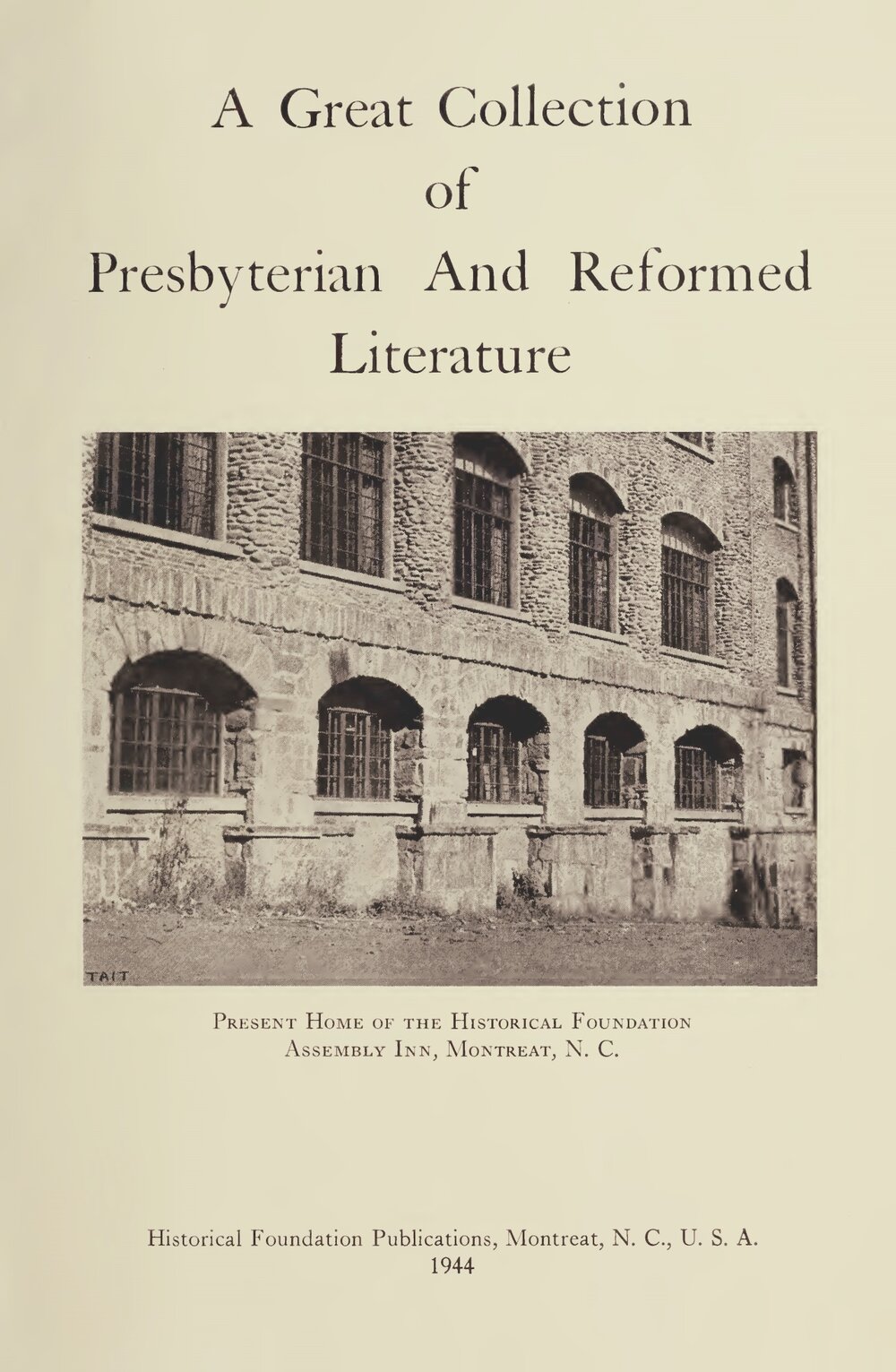
In 1927, the General Assembly of the Presbyterian Church in the United States adopted a plan to form a new agency--the Historical Foundation of the Presbyterian and Reformed Churches.
President of the Mountain Retreat Association, Rev. Robert C. Anderson, promised free, fireproof housing to the foundation. All materials and operations were loaded in a box car and relocated to the basement of Assembly Inn at Montreat, NC.
The work of the foundation was funded by a Presbyterial Tax until 1950, when it became receiving proceeds from the General Fund.
The Historical Foundation, from the beginning, operated with a mission to " gather all available books, documents, and other articles capable of illuminating the history and memorializing the activities of...all Presbyterian and Reformed orders in whatever lands they may have flourished and at whatever times they may have functioned."
1939: Rev. Thomas H. Spence Jr.
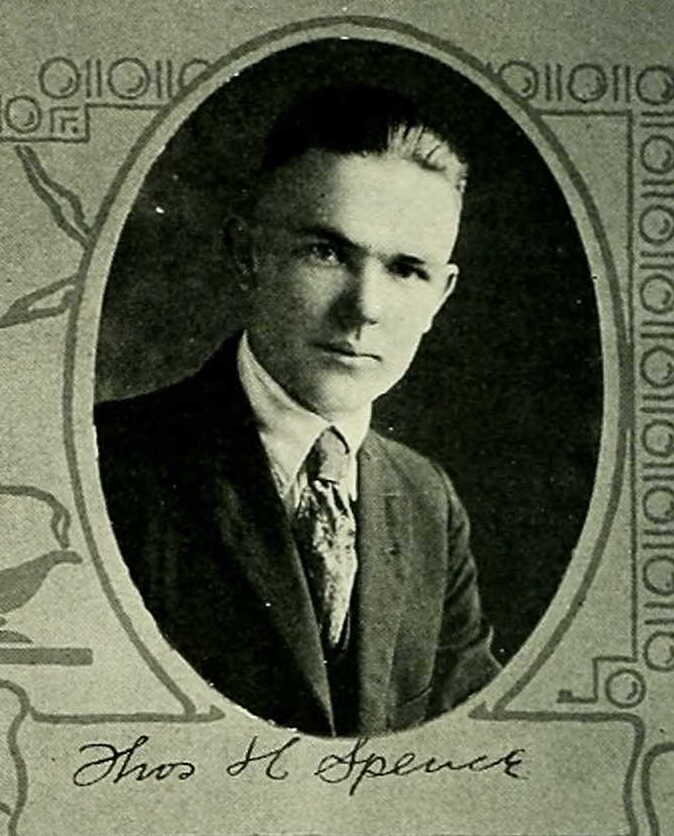
Dr. Tenney died in December 1939 and Rev. Thomas H. Spence Jr. became Acting Curator. (He was named Executive Director in 1956.)
In early 1940, Union Seminary proposed that the Heritage Foundation be moved to Richmond, VA. The proposal was declined, but it was obvious that a larger space was needed. An annex in Anderson Auditorium was provided to house collection overflow.
World War II derailed plans to expand.
Though some progress in raising funds for a new building had already been secured, much of the funding likely came from the profit ($75k) realized by housing 264 Japanese and German internees at Assembly in from October 29, 1942 until April 30, 1943.
The Mountain Retreat Association appropriated $25,000 to erect a separate building for the Historical Foundation.
They also provided the building site. The Historical Foundation pledged to raise an additional $25k.
...
1953: Spence Hall
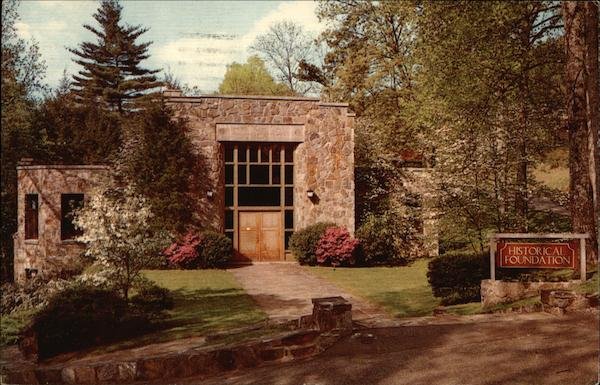
After many delays, construction began in October 1952.
The building--dedicated as Spence Hall-- was completed in 1953 and came in under budget thanks to: 1) the new highway being built between Old Fort and Ridgecrest and 2) the construction of Memorial Mission Hospital in Asheville.
Earlier Montreat buildings had exhausted the supply of field stone in the vicinity. However, grading the road (US 70) from Old Fort to Ridgecrest exposed significant amounts of field stone. It was hauled to Montreat for 1/3 the cost that had been set aside for the materials.
The foundation of Memorial Mission Hospital was laid in the same way as the Historical Foundation--by pouring concrete into wooden frames. The company working on the hospital leased the framing the Historical Foundation at a moderate cost.
1954: Open House
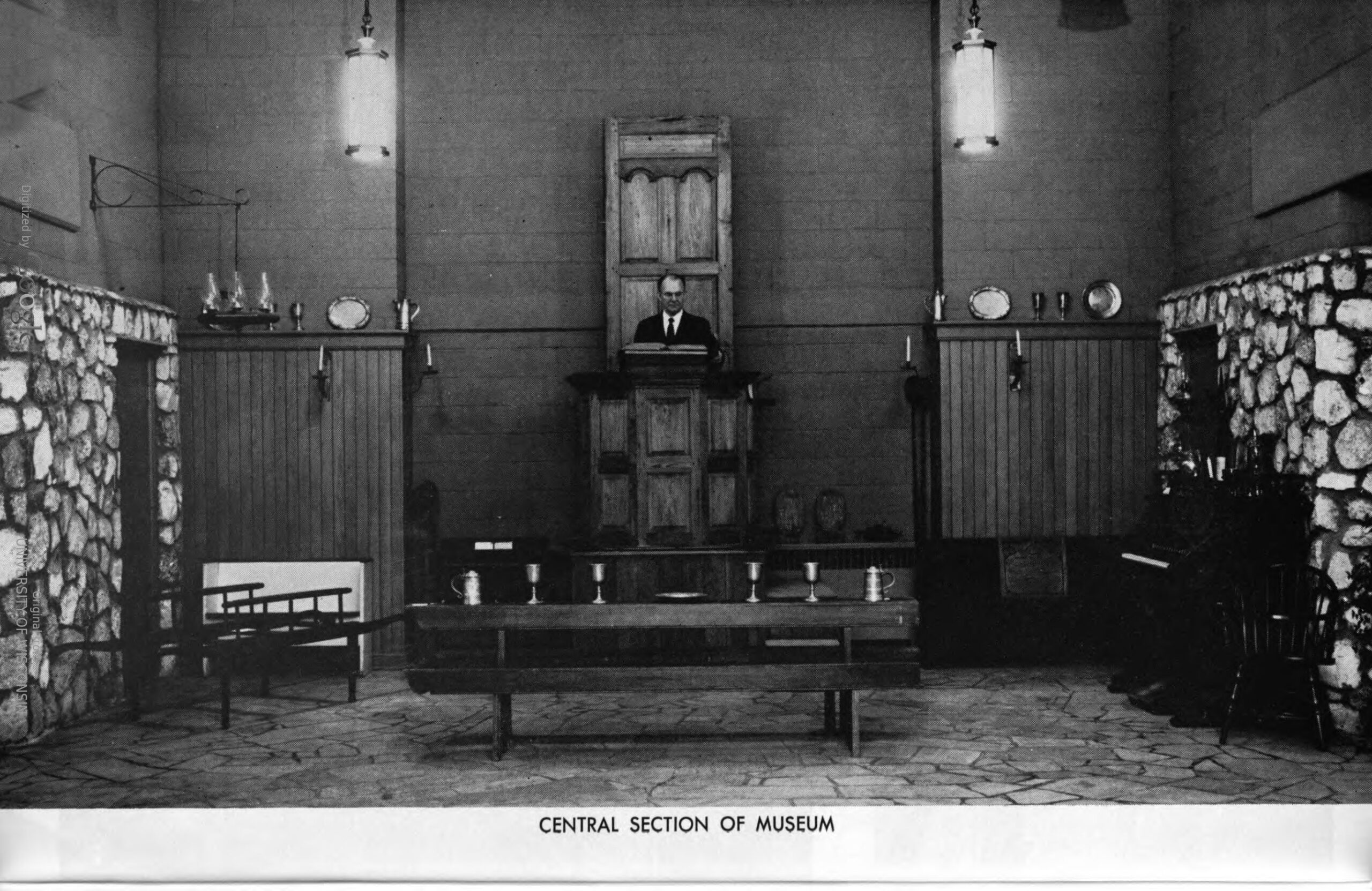
On July 1, 1954, 1,200 guests attended a formal opening of the building to the public during a two-hour period. At one point, the line of people waiting to get in the door extended from the building almost to Lake Susan.
Image: Entrance Hall, Historical Foundation Building; became a museum as well as an archive and research center. The pulpit at center was constructed during the American Revolution and was donated to the Heritage Center from Bethany Presbyterian Church in Statesville. To the right, History of Churches and Woman's Work; To the left, Reading and Reference Room with bookstacks manufactured by Black Mountain Lumber Company.
1982: Expansion

By 1979, to house the Foundation's quickly expanding collection, the Foundation began planning to construct a library annex addition to Spence Hall.
The annex--Freeland Hall--was completed in 1982.
The foundation's work embraced four areas: 1) noncirculating library; 2) archives with sermons, pictures, correspondence, etc; 3) local church history program representing 5,000 churches; and 4) museum, which preserves and displays artifacts.
Despite the ample room and debt-free space provided by the newly-complete Freeland Hall, the reunion of PCUS and PCUSA in 1982-83 (which had split during the Civil War) ignited discussion of moving the Historical Foundation's expansive collection to Philadelphia, so the records could be managed in one location.
1988: Merger
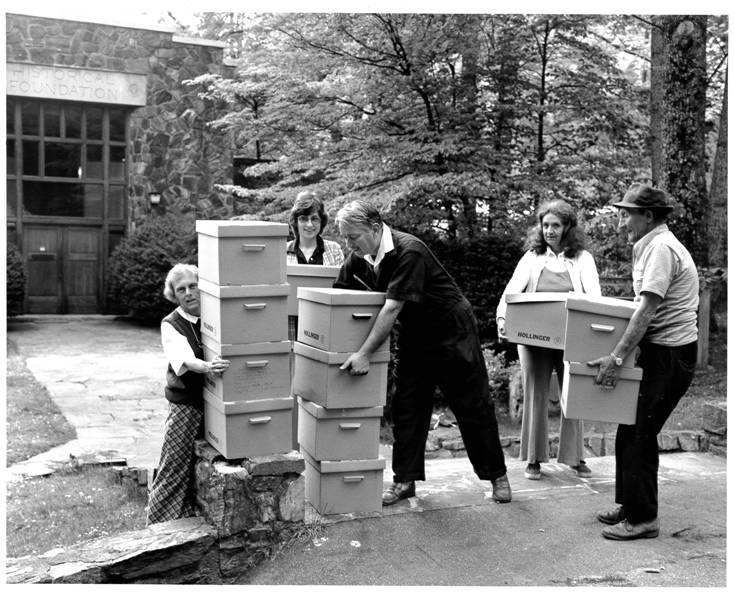
In 1988, the Historical Foundation merged with the Presbyterian Historical Society in Philadelphia. The Historical Foundation became known as the Montreat office (or Southern Regional Office) of the PHS.
The PHS served as the Department of History for the General Assembly of PC(USA) with repositories in both Philadelphia and Montreat.
2006: Closed
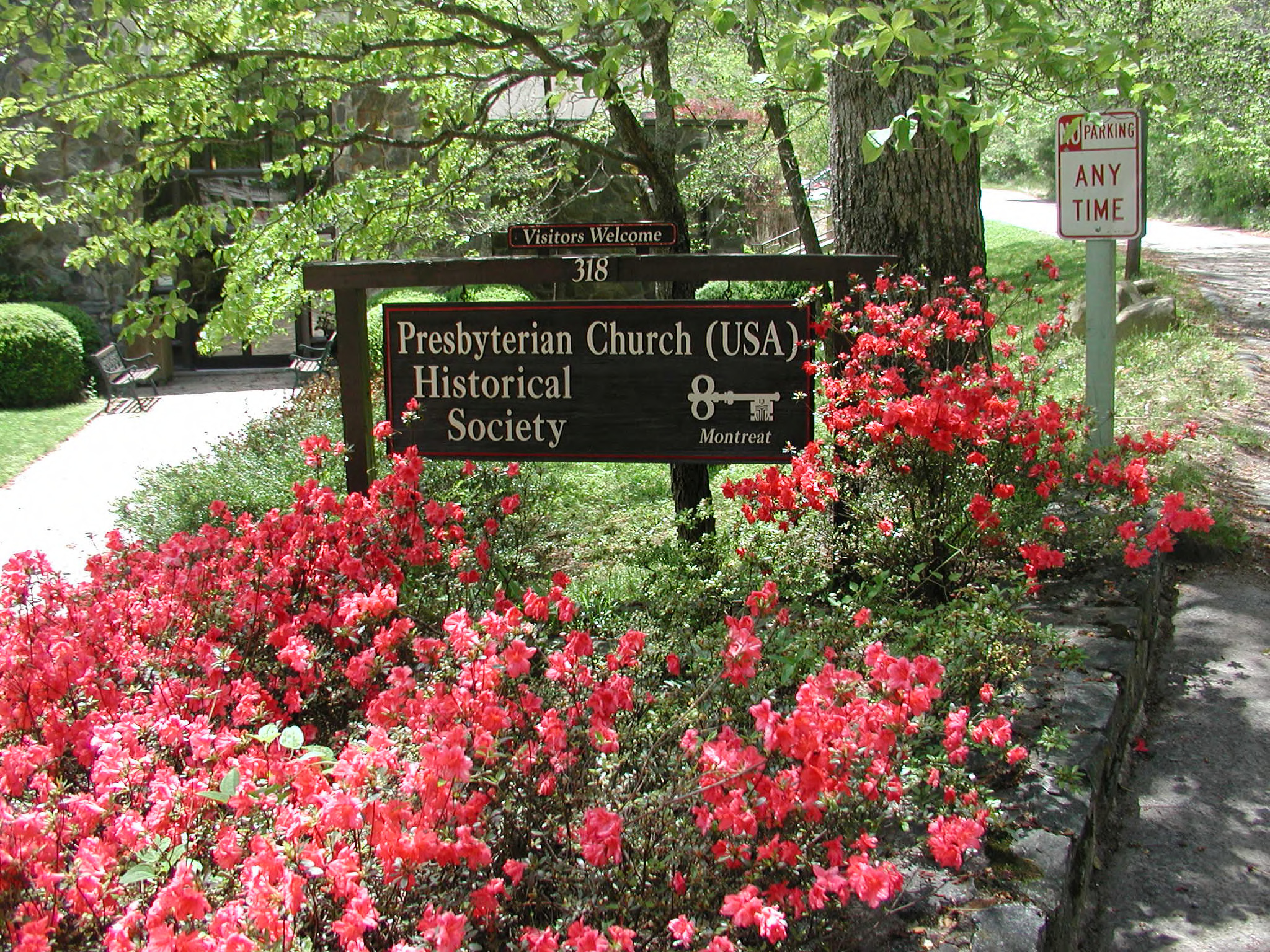
On June 21, 2006 , the General Assembly of the PC(USA) voted 348-147 to approve a plan that would close the Montreat office, "citing financial savings and the advantages of having more records consolidated in Philadelphia."
Despite a battle to save the office or transfer ownership to a local entity, about 60% of the collections stored in Montreat were moved to Philadelphia, including all the records of the General Assembly and synods of the PCUS. Other records, about 20% of Montreat's holdings, were transferred to Columbia Theological Seminary. Another 10% was either returned to individual donors or sent to other seminaries with archives.
Some materials--particularly objects that "were bulky," difficult to move, and did not fit the PHS Collection Policy--were left at Montreat.
2008: Presbyterian Heritage Center Opens
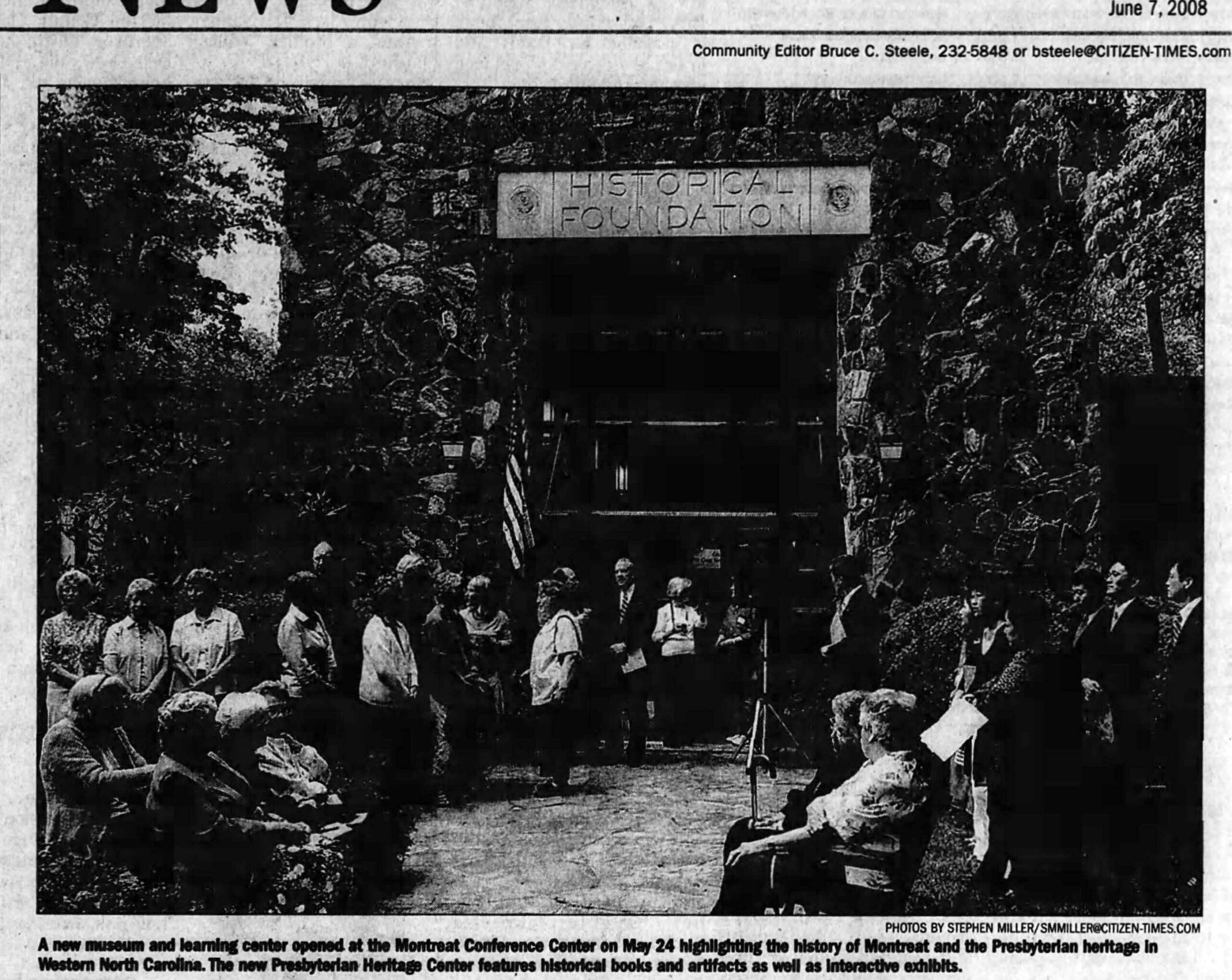
Asheville Citizen-Times, June 7, 2008: A new museum and learning center opened on May 24 highlighting the story of Montreat and the Presbyterian heritage in Western North Carolina. The new Presbyterian Heritage Center features historical books and artifacts as well as interactive exhibits.
The center worked with the Montreat Conference Center this past year to create a historical presence, as requested by the PCUSA General Assembly in 2006, which directed Montreat Conference Center, Columbia Theological Seminary, and the Friends of Montreat to work together to develop creative programs and resources at both Montreat Conference Center and Columbia Theological Seminary.
"As something of a historian, I think there's a way in which history is the elixir of awareness. It deepens our knowledge of who we are.... It's a window through which we envision God's work in the world." - Richard Ray, Chair
